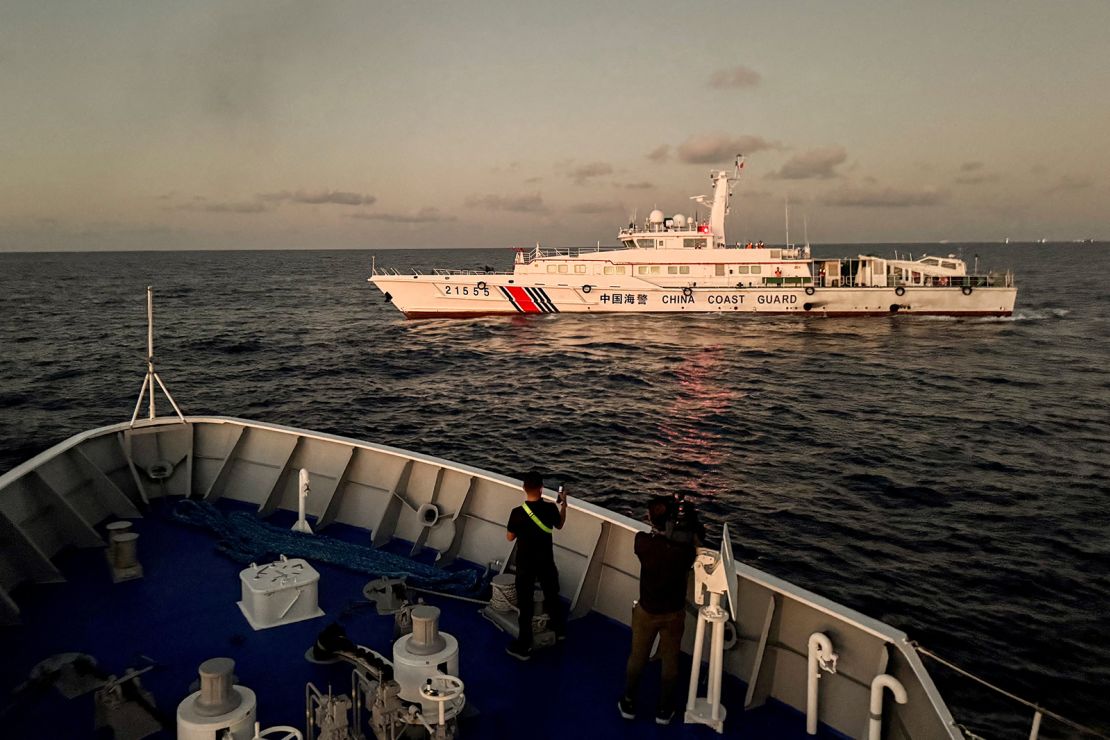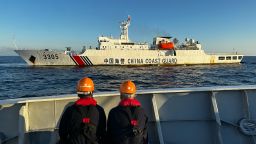US blasts ‘aggressive’ China over South China Sea collision with Philippine ship

The United States on Monday condemned China over a collision with the Philippines in the disputed South China Sea, the latest in a series of increasingly fraught confrontations that have raised the potential of a flashpoint for global conflict in the vital waterway.
A Chinese vessel and a Philippine supply ship collided near Second Thomas Shoal in the contested Spratly Islands early Monday, according to statements from both nations, which blamed each other for the incident.
China claims “indisputable sovereignty” over almost all of the South China Sea, and most of the islands and sandbars within it, including many features that are hundreds of miles from mainland China. Multiple governments, including Manila, hold competing claims.
In a post on X, Washington’s ambassador to Manila MaryKay Carlson said the US condemned China’s “aggressive, dangerous maneuvers,” which “caused bodily injury” and “damaged Philippine vessels.”
Neither the Philippines nor China reported injuries or damage from the collision, which comes just weeks after Philippine President Ferdinand “Bongbong” Marcos Jr. warned that the death of any Filipino citizen at the hands of another country in the South China Sea would be “very close” to an act of war.
Marcos has sought closer ties with the US, which has repeatedly stressed Washington’s “ironclad commitment” to a 1951 mutual defense treaty between the US and the Philippines that stipulates both sides would help defend each other if either were attacked by a third party.
The incident Monday is the latest in a string of recent confrontations between Manila and Beijing that have raised concerns among Western observers of potentially developing into an international incident if China, a global power, decides to act more forcefully against the Philippines.
US State Department spokesman Matthew Miller said Monday the “United States stands with its ally the Philippines and condemns the escalatory and irresponsible actions” by China.
Meanwhile, Deputy Secretary of State Kurt Campbell on Monday discussed the collision with Philippine Undersecretary of Foreign Affairs Maria Theresa Lazaro.
China had “obstructed the Philippines from executing a lawful maritime operation in the South China Sea, interfering with the Philippines’ freedom of navigation,” Campbell said, according to a State Department readout.
The latest incident marks the first run-in between the two countries since a new law in China took effect Saturday to authorize its coast guard to seize foreign ships and detain crews suspected of trespassing for up to 60 days without trial.
The Chinese coast guard on Monday said a Philippine supply ship “ignored China’s repeated solemn warnings” and “deliberately and dangerously” approached a Chinese vessel in “an unprofessional manner,” resulting in a collision.
“The Philippines is entirely responsible for this,” the coast guard said in a statement, a charge rejected by the Philippine military as “deceptive and misleading.”
Instead, Philippine authorities accused Chinese ships of “dangerous maneuvers” that included “ramming and towing” of Philippines vessels.
In a statement on X, Philippine army spokesperson Col. Francel Margareth Padilla said the “main issue remains to be the illegal presence and actions of Chinese vessels within the Philippines’ exclusive economic zone, which infringes on our sovereignty and sovereign rights.”

‘Dangerous and reckless behavior’
In 2016, an international tribunal in The Hague ruled in favor of the Philippines in a landmark maritime dispute, which concluded that China has no legal basis to claim historic rights to the bulk of the South China Sea.
But Beijing has ignored the ruling. Instead it has increasingly pushed its territorial claims in the strategically important and resource-rich waterway. Over the past year China Coast Guard ships – reinforced by maritime militia boats – have been involved in multiple clashes that have damaged Philippine ships and seen Filipino sailors injured by water cannon.
Known as Ayungin Shoal in the Philippines and Ren’ai Jiao in China, Second Thomas Shoal is a submerged teardrop-shaped reef located about 200 kilometers (125 miles) from the Philippine island of Palawan.
It lies in the Spratly Islands, a mostly uninhabited archipelago where oil and gas reserves have been found, and which is claimed by China, the Philippines, Vietnam, Malaysia, Brunei and Taiwan.
The Philippine ship was on a mission Monday to supply its soldiers stationed on the BRP Sierra Madre, a rusting US-built Philippine Navy landing craft that was run aground deliberately in 1999, with a national flag hoisted on board, to assert the Philippines’ territorial claims over Second Thomas Shoal.
China Coast Guard spokesperson Gan Yu on Monday accused the Philippines of “illegally” delivering supplies to the stranded warship.
In a statement, Gan said the Chinese Coast Guard took measures including “warnings and interceptions, boarding inspections and forced evictions” against the Philippine vessel, adding the Chinese side handled the incident in a “reasonable, legal and professional” manner.
“We once again warn the Philippines: Any form of infringement and provocation is futile. The Chinese Coast Guard is on full alert and ready to resolutely safeguard national territorial sovereignty and maritime rights and interests,” Gan said.
In a departure from past confrontations with China when his team were quick to issue statements and visuals, Philippine Coast Guard spokesperson Commodore Jay Tarriela provided no comment to CNN on the collision.
The Armed Forces of the Philippines also declined to give details of the latest run-in.
Instead, Philippine officials made broad statements denouncing China’s actions.
“China’s dangerous and reckless behavior in the West Philippine Sea shall be resisted by the (Armed Forces of the Philippines.) Their behavior contravenes their statements of good faith and decency,” said Philippine Defense Minister Gilberto C. Teodoro, Jr.
“We will exert our utmost in order to fulfill our sworn mandate to protect our territorial integrity, sovereignty, and sovereign rights. It should now be clear to the international community that China’s actions are the true obstacles to peace and stability in the South China Sea.”



No comments:
Post a Comment